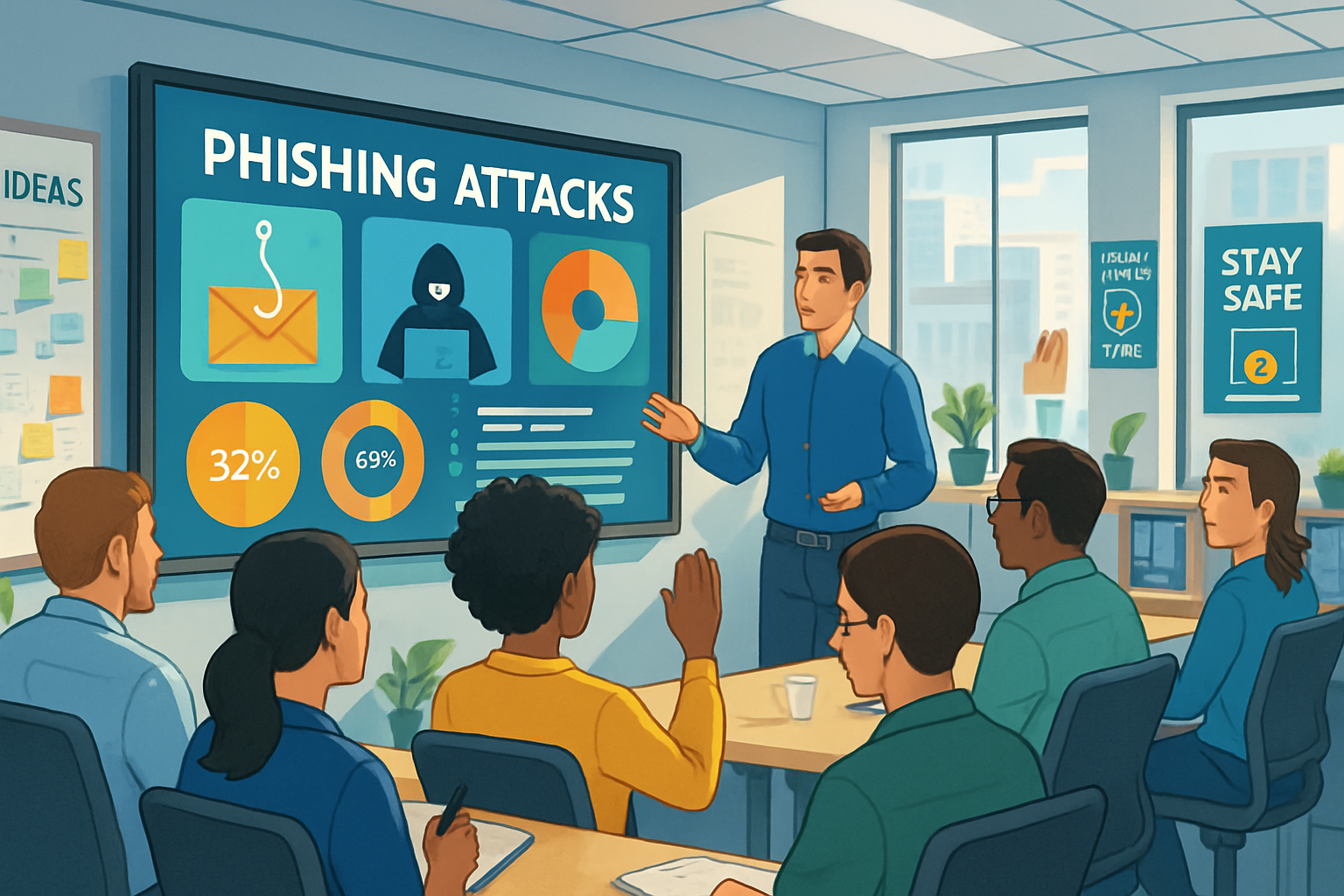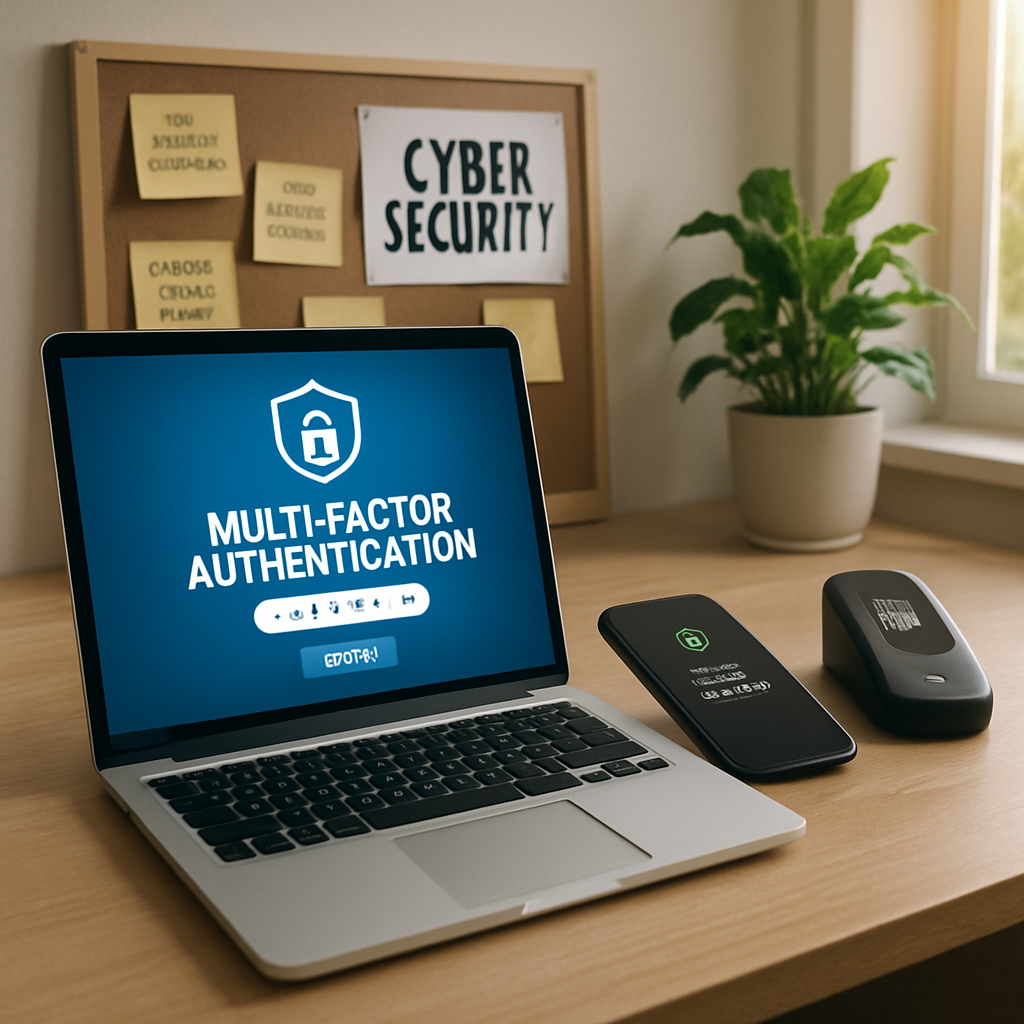AI Voice Cloning: A New Era of Phishing Attacks
AI-powered voice cloning is revolutionizing cybercriminal tactics, ushering in a new wave of compelling phishing attacks that threaten business...
3 min read
.jpeg) Michael Markulec
:
Oct 23, 2025 1:36:01 PM
Michael Markulec
:
Oct 23, 2025 1:36:01 PM

Discover how simulated phishing campaigns can transform your organization's security culture and empower employees to recognize and defend against real-world cyber threats.
Phishing attacks remain one of the most prevalent and damaging cybersecurity threats facing organizations today. Cybercriminals are continuously refining their social engineering strategies, tricking even vigilant employees by disguising malicious intent behind emails, instant messages, or phone calls that appear trustworthy and relevant to the recipient's role or business function.
These deceptive communications often leverage urgent calls to action—such as requests to update credentials, authorize payments, or verify sensitive data—to manipulate employees into bypassing standard protocols. As phishing campaigns grow more personalized and convincing, traditional technical defenses alone can no longer guarantee safety; successful attacks can circumvent filters and endpoint protections by preying on human error.
The potential impact of a single phishing incident can ripple throughout an organization, leading to costly data breaches, unauthorized access to proprietary information, business interruption, and financial loss. Compromised accounts may serve as entry points for wider attacks, including ransomware deployment or the spread of malware across interconnected systems. Beyond immediate operational fallout, organizations face reputational harm and heightened scrutiny from regulatory bodies, particularly if sensitive customer or partner data is exposed.
The expansion of remote and hybrid work environments has further increased the number of access points and variability in employee behavior. With more communication occurring over digital channels—sometimes outside the organizational perimeter—attackers have more opportunities to find and exploit weak links. In this evolving threat landscape, fostering a vigilant, security-conscious workforce is no longer optional; employee awareness and quick response are essential elements in a multi-layered defense strategy, reinforcing both technological controls and organizational resilience.
Simulated phishing campaigns offer organizations a dynamic and highly effective method for elevating security awareness among employees. By replicating the tactics, techniques, and procedures used by actual cybercriminals, these controlled exercises immerse employees in realistic threat scenarios without jeopardizing sensitive data or business operations. This experiential learning approach enables staff to recognize suspicious communications, understand the latest phishing strategies, and practice appropriate response protocols within a safe environment.
Through these targeted simulations, security teams gain valuable insights into patterns of behavior that indicate vulnerability, such as a tendency to click on suspicious links or share confidential information inappropriately. Analyzing results allows organizations to customize training programs, addressing specific gaps and reinforcing lessons where they are most needed. Over time, regular and thoughtfully executed simulated phishing exercises help establish a pervasive culture of alertness and accountability among employees.
As a result, individuals become more adept at questioning unexpected requests and discerning subtle indicators of malicious intent. This shift transforms employees from being the weakest link into proactive defenders who contribute meaningfully to the organization's security posture. Ultimately, simulated phishing campaigns empower the workforce to be vigilant partners in cyber defense, reducing risk and supporting ongoing regulatory compliance.
To gauge the effectiveness of simulated phishing campaigns, organizations should track key performance indicators such as click rates, reporting rates, and the time taken to identify and escalate phishing attempts. A decreasing trend in click rates, accompanied by faster and more accurate reporting, demonstrates measurable growth in employee vigilance and responsiveness. Monitoring these metrics over time provides a clear picture of evolving behaviors and highlights areas needing additional attention.
In addition to quantitative measures, gathering qualitative feedback from employees is equally valuable. Soliciting input about the clarity, relevance, and perceived difficulty of simulated phishing exercises reveals essential insights into employee perspectives, learning obstacles, and evolving threat awareness. This feedback loop enables security teams to refine training content, tailor messaging for specific audiences, and proactively address emerging risks or misconceptions.
Regular, structured analysis of both quantitative results and qualitative input informs continuous improvement. It empowers organizations to fine-tune their security awareness programs, demonstrate tangible progress to stakeholders, and provide evidence of ongoing compliance to regulatory bodies. This holistic, data-driven approach ensures that investments in simulated phishing are both effective and aligned with broader organizational security goals.
A robust cybersecurity posture relies not only on advanced technologies but also on an informed and vigilant workforce. Simulated phishing—when integrated into a broader, role-specific security awareness program—provides employees with hands-on learning experiences that mirror the evolving tactics of real attackers. This approach not only sharpens employees' ability to identify and respond appropriately to suspicious communications but also reinforces positive security behaviors that extend beyond annual compliance training.
By combining regular simulated phishing exercises with contextual education, measurable feedback, and recognition for secure practices, organizations build engagement and collective responsibility across all levels. Leadership involvement and visible support play a critical role in sustaining program momentum and embedding security as a core organizational value.
Over time, these efforts foster a culture where employees actively contribute to the defense of sensitive data and business operations. Incremental improvements in awareness and response translate to measurable reductions in risk, more substantial alignment with regulatory requirements, and enhanced protection of digital assets. As cyber threats continue to evolve, a resilient human firewall—supported by continuous training, clear communication, and executive backing—enables organizations to adapt confidently and maintain trust in an increasingly complex threat landscape.

AI-powered voice cloning is revolutionizing cybercriminal tactics, ushering in a new wave of compelling phishing attacks that threaten business...

Small businesses face growing cyber threats, making multi-factor authentication a critical defense to safeguard sensitive data and ensure business...

Discover how CMMC 2.0 is reshaping cybersecurity compliance for small manufacturers in the defense sector and what steps your business must take to...